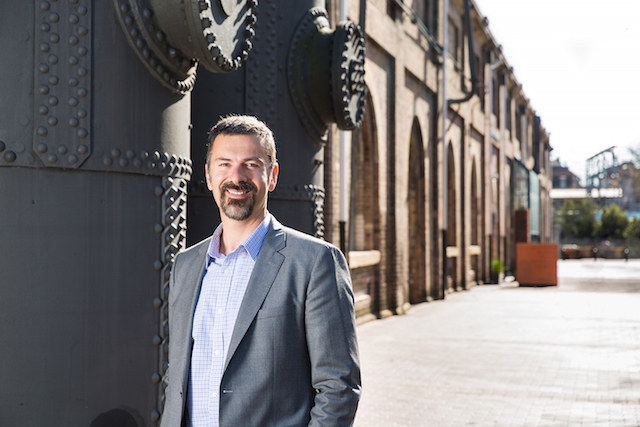Could Australia’s poor track record in commercialising research be turned into an advantage? Data 61’s CEO Adrian Turner believes so.
Australian research agency Data61 was formed last year following the science hostile Abbott government’s slashing of research budgets coupled with a merger of the National ICT Australia organisation (NICTA) with the long established CSIRO.
The intention behind Data61 was to create a world leading data research agency. At the time of the announcement then communications minister and now Prime Minister, Malcolm Turnbull said, “Having a single national organisation will enable Data61 to produce focussed research that will deliver strong economic returns and ensure that Australia remains at the forefront of digital innovation.”
Having been in the role for six month and now, in his words, having his feet finally under the desk, Data61’s CEO Adrian Turner met with the media last week to discuss the directions he intends to take the organisation.
Business in a data rich world
Coming from a corporate Research & Development background and having spent over a decade in Silicon Valley tech businesses, Turner is conscious how industries are being changed in a data rich world.
For corporate R&D model shifting as industries are changing he says, “their challenge is they can’t hire the digital and data talent that they really need.” Turner sees one of the opportunities for Data61 in providing access to the high level expertise large companies are struggling to find.
Giving Data61 is global focus is Turner’s main objective with an aim of capturing a tenth of one percent of the world’s private sector R&D budget, describing how he will sell the organisation’s scientific expertise to global corporations, “we can plug them into the Boeing and GMs of the world and introduce them to the people to short circuit the sales process.”
“We’re going to go around the world where corporate R&D dollars get allocated and convince these companies that Australia is a place where primary R&D can take place,” Turner continued, “we’ve got the talent and we’ve got the capabilities to do the research.”
Good at the basics
Turner highligthts an ongoing problem in Australian science and industry. The nation historically has been good at basic research but poor at getting those developments to the marketplace, something the World Intellectual Property Organisation’s Global Innovation Report has regularly flagged.
While Australia ranks at 17 overall in the 2015 WIPO report, the nation’s business community flounders at 38th in the world for its collaboration with researchers and 39th for knowledge and technology output. Put bluntly, Australian businesspeople are not very sophisticated or research orientated.
Adrian Turner puts that down partly to the nation’s being weak at product management, “I think it’s a function of global companies seeing Australia as a sales and marketing outpost so we don’t have the product development expertise.”
Inward looking locals
The nation’s inward looking local corporations are also part of the problem, “for us to succeed as a country we have to have a global mindset. We can’t have the zero-sum mindset that I win if you lose in the domestic market,” Turner continued. “In that sense what we’re doing is creating a product marketing function.”
So to meet Data61’s objectives of meeting its own financial performance targets, developing an R&D ecosystem and having an impact on the nation economy, Turner sees the organisation having to go overseas for most of its partnering with private sector researchers.
Sparking the startups
All is not lost though for Australia with Turner believing Data61 has a role in helping the local startup community develop. “We don’t have the infrastructure in place to support the entrepreneurs to go out and build new business,” he says.
“In Silicon Valley over decades you have this infrastructure, you have this workforce, you’ve got the legal infrastructure, you’ve got capital, all of these things that have built up organically over decades and they stack the odds in favour of the entrepreneurs.”
Data61 was born out of an unfortunate period of Australian politics where for the first time the nation was lead by a government that was genuinely hostile to science. Now the political winds have changed and the organisation has a global focus, it may be possible to reverse the long-term neglect of Australian research and build a new business culture.
Similar posts:





